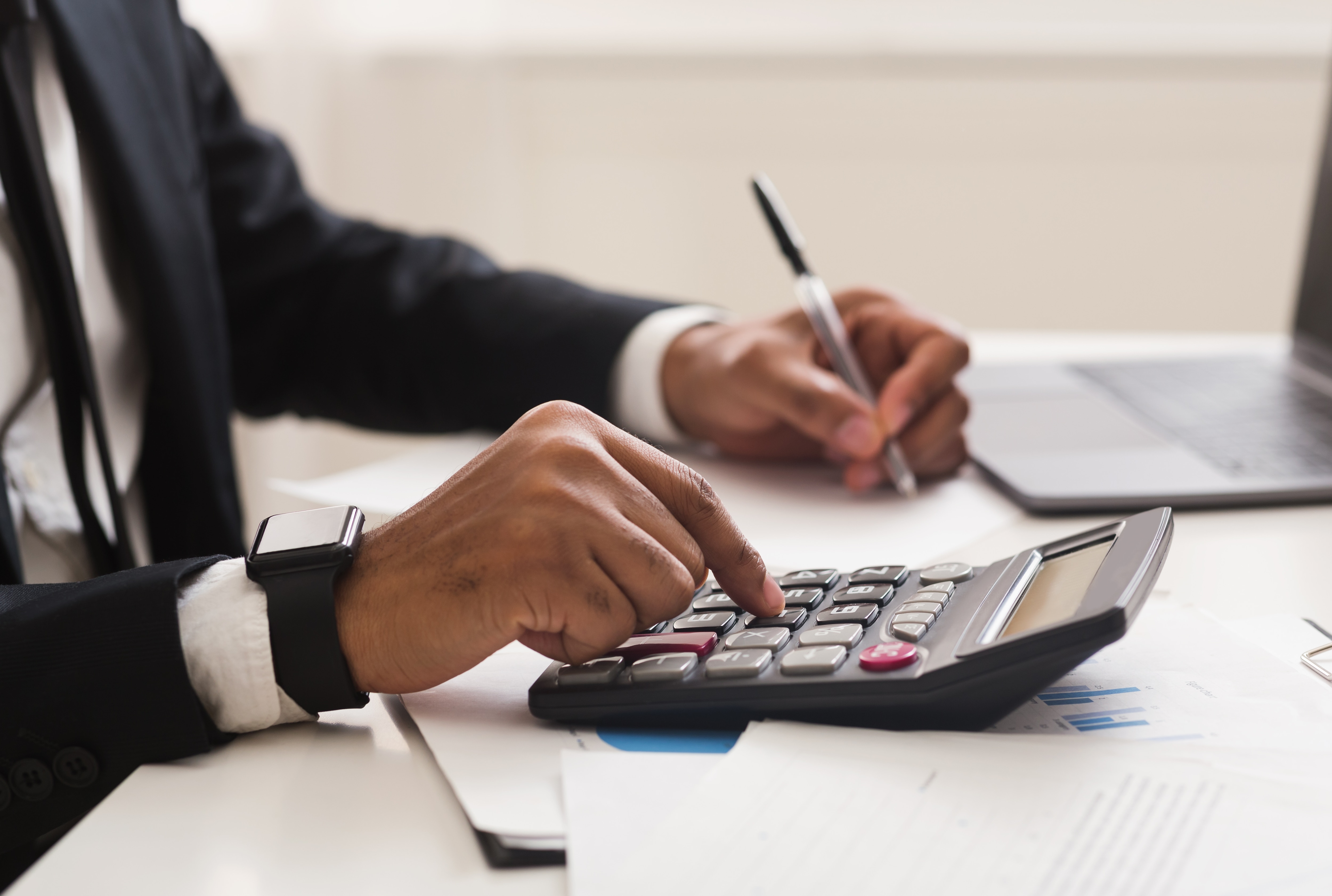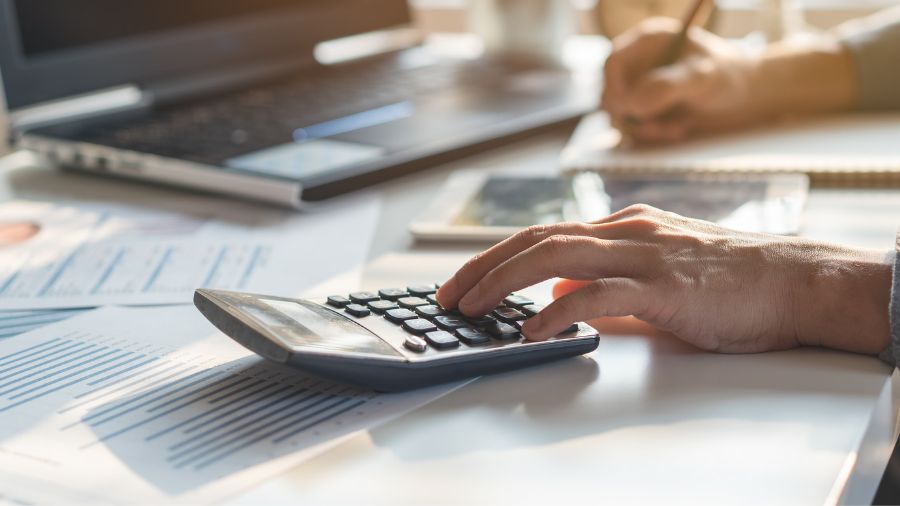As a small business owner in Canada, you can save money on taxes by claiming eligible deductions on your annual returns. Keep reading for a deeper understanding of how this works, and whether you could qualify for the common tax deductions below.

Small business deductions: What applies and do I qualify?
Tax deductions vs tax write-offs vs tax credits
When it comes to your business tax return, terms like tax deduction and tax write-off can be used interchangeably. While both deductions and credits can lower your tax bill if you qualify, each works a little differently.
Deductions lower your amount of taxable income, which the Canada Revenue Agency (CRA) uses to determine your tax rate category. Let’s say you earn $50,000 in taxable income during a tax year and have $10,000 in business deductions, which lowers your taxable income to $40,000. This lowers your tax rate, which saves you money if you owe a tax bill.
In contrast, non-refundable tax credits lower the actual amount of taxes you owe the CRA. For example, let’s say that after deducting your business expenses, you owe $6,000. Then you claim a tax credit of $1,000. This credit lowers your total tax bill to $5,000. If you use enough tax credits, you could lower your tax bill to $0.
Tax forms you’ll need to fill out
As a small business owner, you can expect to complete a number of tax forms each year. Here are the key documents to keep on your radar when tax time rolls around.
GST/HST return
If your business is registered to collect Goods and Services Tax (GST) or Harmonized Sales Tax (HST), you’ll need to file an annual GST/HST return to remit those taxes to the government. You can also claim input tax credit (ITC), which is the GST/HST you’ve paid on business-related expenses. If you’ve paid more GST/HST than what you’ve collected, you could qualify for a refund.
You can check your eligibility for ITC savings online. To claim your rebate, use Form GST189.
T1 vs T4: What’s the difference?
All Canadian taxpayers, including business owners, must fill out a T1 form and submit it to the CRA. T1 is a summary of all the taxes paid and income generated throughout the year and is due by April 30 each year.
If you hire employees and you’ve paid them at least $500 in a tax year, you’ll also need to fill out a T4 form. This is a document of income paid and withheld, as well as contributions deducted from their pay, such as union dues, pension plans, and employment insurance. The T4 form must be distributed to employees by the end of February each year and can be generated automatically through QuickBooks Online.
Forms for small business tax deductions
To qualify for small business tax deductions, you must only claim expenses related to running your business. Depending on your situation, you’ll need to fill out a specific form to claim these deductions on your tax returns:
Business tax filing deadlines in Canada
Individuals with self-employment income must file their income tax returns by June 15. For corporations, income tax returns (T2s) must be filed no later than six months after the business’s year-end. While this date may vary, it most commonly falls on December 31.
How to qualify for small business deductions
The small business deduction offers generous tax reductions for small and medium-sized enterprises. To qualify for this type of tax deduction, your company must be a Canadian-controlled private corporation (CCPC) and meet the following conditions, according to the T4012 – T2 Corporation Income Tax Guide:
- It is resident in Canada and was either incorporated in Canada or resident in Canada between June 18, 1971 and the end of the most recent tax year.
- 100% of your capital stock shares are not listed on a designated TSE 300.
- It has less than $50 million in taxable capital employed in Canada.
In addition, your small business cannot be controlled directly or indirectly by:
- One or more non-residents
- One or more public corporations (other than a prescribed venture capital corporation, as defined in Regulation 6700)
- A Canadian resident corporation that lists its shares on a designated TSE 300 outside Canada
- Any combination of persons or corporations listed above
Corporations with between $10 and $50 million in taxable capital qualify for a partial small business deduction, while businesses over the $50 million limit don’t qualify at all.
If some of your corporation’s income comes from active business carried on in other countries, you can only use the taxable income from business conducted in Canada. In addition, there’s a limit to the first $500,000 of taxable capital. If your business’s annual taxable income exceeds the limit, you can only claim the deduction on the portion under the limit.
In addition to federal taxes, most corporations have to pay provincial income taxes. Provincial governments usually have two rates: a higher rate and a lower rate. If you qualify for the small business deduction, you get to claim the lower rate.
For example, if your corporation is in Nova Scotia and you qualify for the small business deduction, you face a 2.5% tax rate. In contrast, the higher rate is 14%. Some provinces also set their own limits on how much income you can take into account when using the lower rate.
Learn how you can save more time and easily manage business finances with Quickbooks Online.
Common business expenses
The CRA allows you to claim tax deductions for all eligible business expenses. As a general rule of thumb, you can deduct any expenses that are necessary and common in your industry, from office supplies and inventory to rent, meals, and entertainment. Here are some common deductions below.
Advertising
You can deduct business expenses incurred for advertising your business in print, on Canadian-owned TV stations, and through online ads. If print media advertising is directed toward a Canadian market and the content is 80% editorial content, you can deduct 100% of the expenses. Otherwise, you can deduct 50% of your advertising expenses.
Bad debt
You can claim a deduction for bad debts if you determine that an accounts receivable turned into a bad debt during a tax year. However, you can only claim this as a business expense if you already included the accounts receivable as income.
Vehicle costs
If you drive your vehicle for business reasons, you can deduct most expenses incurred from doing so, including gas, insurance, registration fees, and any necessary maintenance. The CRA gives you two options in how you deduct your vehicle costs. You can itemize all those costs and list them as deductions, or you can take the automobile allowance rate in your area for the number of kilometres you drive.
Remember that only business use of your vehicle works as a tax deduction, so keep detailed mileage logs if you have a vehicle that you drive for both personal and business reasons. If you decide to itemize your deductions, you must determine what percentage of your driving you do for business purposes. Then, deduct only that percentage of your vehicle costs. It’s often easier to go with the automobile allowance rate so you don’t have to keep track of every expense.
Standby charges
If you provide an employee with an automobile and the employee drives it for personal use, you must report the employee benefit as a standby charge as a form of income for the worker. As the employer, you receive a tax credit for allowing your employee to use the vehicle, but you must report the standby fee, along with the operating expense benefit, as income for the employee.
The amount of the standby charge may change based on the year of the vehicle, the province or territory where the driving occurs, how many kilometres the employee drives the car, and how many days the employee uses the vehicle. Good record-keeping is essential to accurately calculate the standby fee.
Meals and entertainment
You can claim up to 50% of meal and entertainment expenses, such as tickets and entrance fees to an entertainment or sporting event, gratuities, cover charges, and room rentals for hospitality suites. You can't claim meal and entertainment expenses if you bill clients for them later. You can claim expenses related to hosting parties for employees, but you are limited to six of these per year.
Rent and business maintenance
Rent for your workspace counts as a business expense for a tax deduction. You can also deduct minor repairs and maintenance performed on your business property, such as changing light bulbs or mowing the lawn. However, you can’t deduct the value of your own labour, nor can you deduct any improvements that provide a long-term benefit, such as a major renovation. Expenses you incur for telephone service and utilities at your business building also count toward a deduction.
Interest on loans
Any interest on business loans or acquired property counts as a tax deduction. You can also deduct the interest on loans made against an insurance policy, provided the insurer didn’t raise the base amount you paid for your policy.
Office expenses
Office expenses and supplies, such as pens, paper, stamps, and stationery, also count as business expenses you can deduct at tax time. Make sure to keep accurate records of these purchases by documenting your receipts properly.
Payroll
If you have employees, you can deduct gross salaries, wages, and company contributions to pension plans and insurance policies. Report each salary on a T4 slip and each pension plan contribution on a T4A slip when you submit your tax return. You can deduct the salaries you pay to your spouse or children as long as you keep accurate records.
What do I need to give my accountant for small business taxes?
If you’re wondering what documents to give your accountant for tax season, you can start by providing them with receipts for each of the business expenses you’re claiming. To make it easier to track your business expenses, consider using a mobile app that syncs with your accounting solution. That way, you can upload everything at the tap of a finger rather than spending countless hours on manual entry.
If your business expense receipts are saved in your accounting tool, it becomes a lot easier for you or your accountant to fill out your tax return. This process helps ensure you don’t overlook any expenses and inadvertently increase your tax burden.
Keeping accurate records also helps ensure each expense complies with CRA regulations, helping prevent an audit from the agency later.
Your accounting solution can also let you double-check your tax return and deduction calculations for any errors before filing. If you catch an error after the fact, it’s a simple process to amend your tax return.
To take full advantage of the ability to deduct business costs come tax season, you first need to track and record all expenditures made by your business throughout the year. QuickBooks makes tracking expenses, income, and mileage logs easier. With automatic tracking and categorizing expenses, filing for deductions can be straightforward. Keep more of what you earn and start tracking your small business expenses with QuickBooks today.


